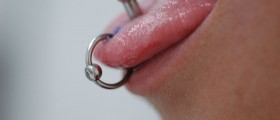Introduction
A large number of women and girls prefer to emphasize the sensuality of their bellies by piercing the belly button, which provides an additional sparkle. Not all of them are aware of the fact that such piercings can be affiliated with numerous different sorts of dangers. A person needs to take extra care of a belly button piercing. Otherwise, it can easily lead to infections.
These dangerous infections can easily be prevented simply by following certain measures of precaution. The pierced area always needs to be disinfected after having a bath, exercising, or swimming. The same area also needs to be dried completely by gently patting it. The navel ring needs to be moved with extra care, and frequent movements of the ring need to be avoided as much as possible because it may lead to the aggravation of the wound.

Belly Button Piercing Infection
If a belly button piercing gets infected, it can be easily noticed. The infections are commonly caused by various types of fungi or bacteria which come from numerous sorts of pollutants that come in contact with the wound.
The infections can lead to the occurrence of different infectious diseases. They can be easily recognized by painful sensations, swelling, redness around the pierced area, the feeling of hotness to the touch, and the release of pus from the found, which can later on progress to the release of blood or a yellow-green discharge.
If the infection reaches such a stage, then it is medically referred to as sepsis-septicemia. The infection needs to be treated as soon as possible, otherwise, it may lead to abscess and several other sorts of medical complications. Abscesses can sometimes even be fatal if they are left untreated. Some cases of belly button piercing infections may spread to the entire abdomen.
- The most commonly identified organisms from body piercing infections include skin flora responsible for skin and soft tissue infections such as staphylococcus and streptococcus species though there are a few exceptions. There is a higher rate of incidence of pseudomonas infections when involving the cartilaginous ear and nasal structures.
- A national survey found that of the respondents, approximately 35%, reported having some form of body piercings with 14% endorsing piercings at sites other than the soft earlobe. Women, in general, are more likely than men to have body piercings. Women additionally have more piercings to sites other than the soft earlobe when compared with males. Individuals between the ages of 24 to 34 have the highest prevalence of body piercings. Of those individuals with piercings at sites other than the soft earlobe, 23% reported experiencing a medical complication.
- Conservative treatment of minor local infections includes warm compress and over-the-counter or prescription topical antibiotics such as bacitracin or mupirocin. Oral antibiotics such as cephalexin or clindamycin provide coverage for streptococcus and staphylococcus. If concerns for methicillin-resistant Staphylococcus aureus exist, then oral trimethoprim/sulfamethoxazole confers adequate coverage. Infected piercings of the high ear involving the cartilaginous structures are likely to be caused by Pseudomonas and are treatable with a fluoroquinolone like ciprofloxacin.
- Potential complications of piercing infections are relatively minor when identified early and treated with appropriate antimicrobials. A delay in the presentation can lead to increased severity of local skin and soft tissue infections such as abscess formation, nasal septal perforation, airway compromise with as in cases of Ludwig angina, or possible dissemination to distant sites such as endocarditis. Lastly, complications of antimicrobial use have the known risk of Clostridium difficile colitis.
Belly Button Piercing Infection Treatment
If a person suffers from a belly button infection, he or she needs to visit a doctor as soon as possible. The infection needs to be cleaned with alcohol first to disinfect it. The belly ring then needs to be removed, but only if there is no pus discharge.
In case of pus discharge, one needs to take oral antibiotics. Rare cases may require surgical interventions so that the abscess can be removed.
Antiseptic creams, hot compresses, and hydrogen peroxide may also be of certain help in mild cases of infection. If the infection spreads to the entire body, the patient needs to be treated with intravenous antibiotics.

















Your thoughts on this
Loading...